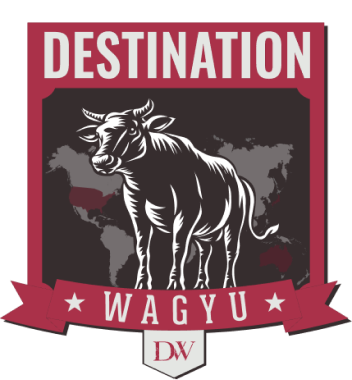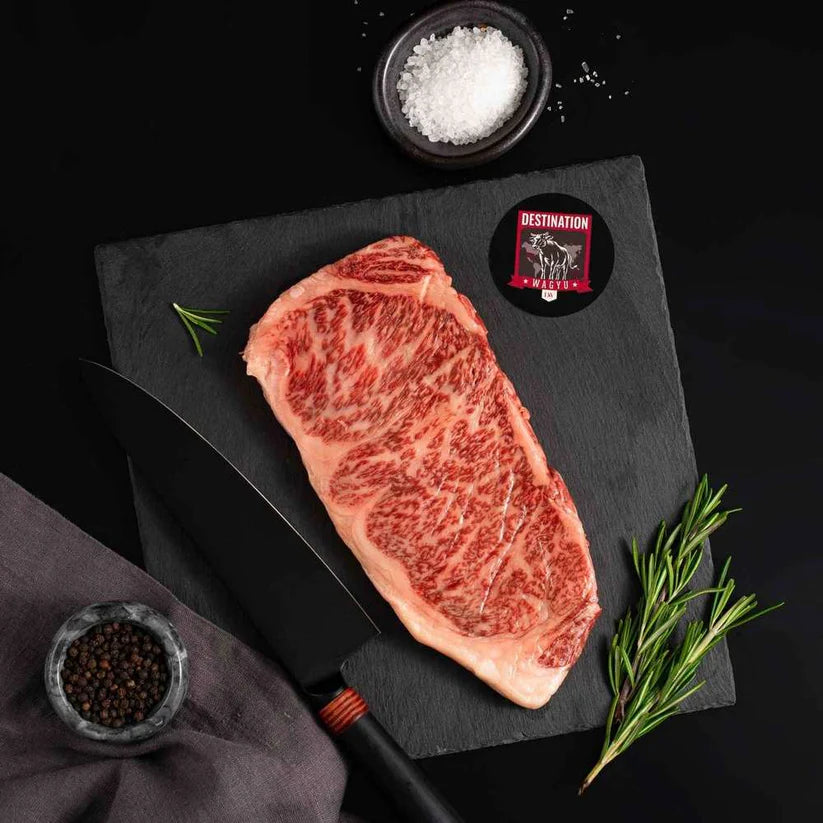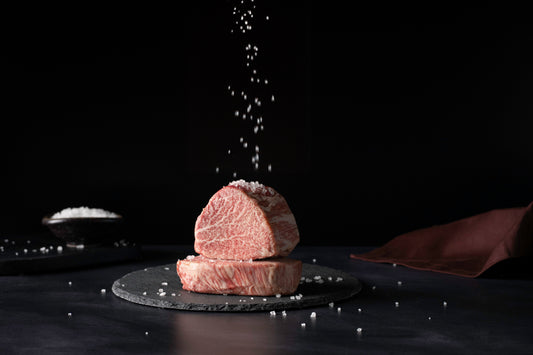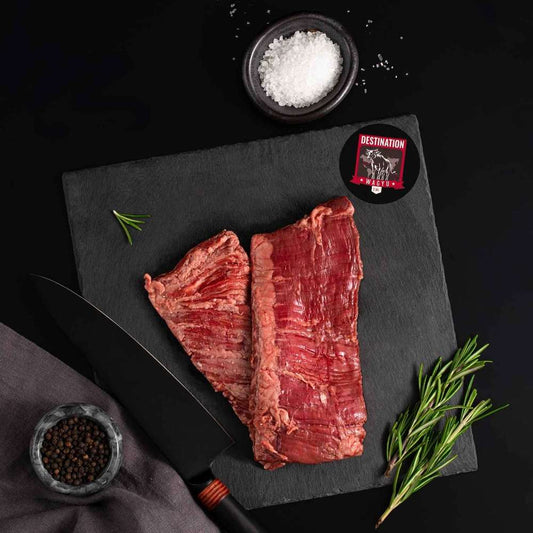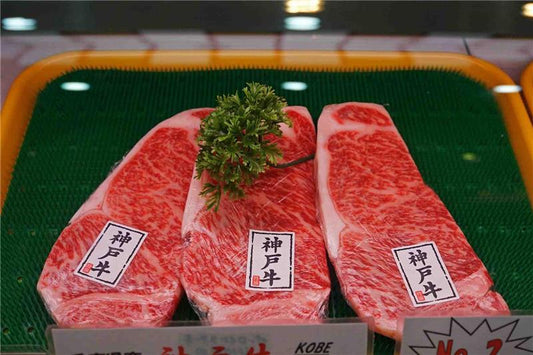Wagyu beef is synonymous with luxury, boasting a reputation for unmatched tenderness, marbling, and flavor. However, not all Wagyu is created equal. In particular, the differences between American Wagyu and Japanese Wagyu have become a focal point of debate in the meat industry. As a professional in this space, I believe it's crucial to understand these differences deeply—whether you're a breeder, a butcher, a chef, or involved in meat distribution. The contrast between these two types of Wagyu isn't merely geographic; it’s genetic, procedural, and cultural.
In this article, I’ll dive deep into the technical aspects of what separates American Wagyu from Japanese Wagyu. From the origins of these cattle breeds to the intricacies of genetics and breeding methods, as well as meat quality and grading systems, this analysis will provide a comprehensive understanding of how these two types of Wagyu differ. By the end of this discussion, you will not only appreciate the nuances of Wagyu beef but also understand why these distinctions matter in the professional beef industry.

Historical Origins and Development
Japanese Wagyu
Wagyu, or "Japanese cow," is deeply embedded in Japan’s history, where cattle were initially bred for agricultural purposes rather than for meat consumption. The term “Wagyu” refers to several breeds native to Japan, including Kuroge Washu (Japanese Black), Akaushi (Japanese Brown), Nihon Tankaku (Japanese Shorthorn), and Mukaku (Japanese Polled). Over centuries, the Japanese government took deliberate steps to maintain the purity of these breeds, implementing strict guidelines to protect their genetic lineage. As a result, Wagyu from Japan has been shaped by both selective breeding and the preservation of native strains, particularly Kuroge Washu, which is the source of the famed Kobe beef.
Japan's closed borders for much of the 19th century further isolated its cattle genetics, leading to unique traits not found in Western cattle. Even after the borders opened, the Japanese government heavily regulated cattle genetics. This meticulous lineage control remains a cornerstone of Japan’s Wagyu industry, where cattle are tracked and graded under a rigorous system. The country's various regions, such as Kobe, Matsusaka, and Omi, have each developed their own reputations for producing premium Wagyu with unique flavor profiles, contributing to the international prestige of Japanese Wagyu.
American Wagyu
The story of American Wagyu began much more recently, in the 1970s, when Japanese Wagyu cattle were first imported to the United States. These imports were limited, consisting primarily of Kuroge Washu and Akaushi breeds. American ranchers began cross breeding these Japanese imports with popular American breeds, particularly Angus, to create what we now call "American Wagyu." This crossbreeding was aimed at creating cattle that could thrive in the American ranching environment while inheriting the signature marbling of Japanese Wagyu.
Unlike Japan, where the emphasis remains on purebred genetics, American Wagyu is often a hybrid. This hybridization is driven by commercial interests, particularly the need to produce cattle that can handle the industrial feedlot system in the U.S. while still delivering the premium characteristics of Wagyu. Over time, American Wagyu has become known for its blend of the rich marbling of Japanese Wagyu with the robustness and beefier flavor of American Angus, creating a product that is distinct in its own right.
Genetics and Breeding Practices
Japanese Wagyu
The genetics of Japanese Wagyu are tightly controlled and meticulously managed. As mentioned, Kuroge Washu, or Japanese Black, is the most prized breed, known for its exceptional marbling and high intramuscular fat (IMF) content. In Japan, the breeding process involves inbreeding strategies designed to preserve these traits over generations. The goal is not just marbling but also maintaining a specific fat composition, particularly high levels of unsaturated fats, which contribute to the tenderness and distinctive mouthfeel of Wagyu beef.
The Japanese Livestock Improvement Association (JLIA) plays a critical role in managing Wagyu genetics. Every registered Japanese Wagyu has a traceable lineage, which helps breeders select sires and dams to maximize desirable traits. This level of control has led to highly consistent quality in Japanese Wagyu, which is one reason it commands such high prices globally. Additionally, government-regulated feed programs and growth management further contribute to the breed's genetic and environmental advantages.
American Wagyu
In contrast, American Wagyu typically involves crossbreeding, most commonly with Angus cattle. These hybrids, referred to as F1 or F2 crosses, retain some Wagyu characteristics, such as marbling, but also incorporate the heartier characteristics of American breeds. Fullblood Wagyu, which are purebred descendants of the original Japanese imports, are rarer in the United States but do exist, particularly among high-end breeders looking to capture the premium market.
The genetic hybridization in American Wagyu introduces variability. For example, American Wagyu typically has less marbling than purebred Japanese Wagyu, but the marbling is still significantly higher than conventional American beef. Hybrid vigor—resulting from the crossbreeding of two different breeds—can lead to faster growth rates and higher adaptability to U.S. agricultural conditions, including large-scale feedlots. However, the trade-off is often a reduction in the consistency and premium quality that purebred Japanese Wagyu is known for.
Comparison of Genetics
From a genetic perspective, Japanese Wagyu is about purity, consistency, and maintaining a high level of intramuscular fat through carefully controlled breeding. American Wagyu, on the other hand, is about balance—using crossbreeding to create cattle that are better suited to American ranching environments while still producing a more marbled product than traditional American breeds. The hybrid genetics of American Wagyu can lead to variability, but they also make the product more accessible to a broader consumer base.
Production and Rearing Methods
Japanese Wagyu
The rearing process for Japanese Wagyu is as meticulous as its genetics. Cattle are raised in small, family-run operations where each animal is given individual attention. Wagyu cattle in Japan are often housed in smaller barns and receive specialized diets that can include barley, rice straw, and other high-quality feed. The attention to detail in their rearing extends beyond diet. Some Wagyu producers famously massage their cattle or play them calming music to reduce stress, believing that these practices contribute to better meat quality. The low-stress environment helps ensure that muscle fibers remain tender and that fat deposits evenly.
Japanese Wagyu cattle are raised with minimal use of growth hormones or antibiotics, and the feed programs are strictly regulated by the government. The goal is to optimize fat marbling and texture, with a strong emphasis on producing high-quality meat rather than mass quantities. It’s not uncommon for cattle to be raised for up to three years, significantly longer than the average U.S. cattle, which are often slaughtered by 18 months.
American Wagyu
American Wagyu production is much more industrialized. While some high-end producers in the U.S. mimic Japanese practices by raising cattle in smaller operations and using specialized feeds, the vast majority of American Wagyu are raised in large feedlots. These cattle typically receive a diet heavy in grains, corn, and soy, which helps promote rapid weight gain and marbling. However, the difference in feed composition and environmental factors can lead to variations in fat quality and distribution compared to Japanese Wagyu.
Another significant difference in rearing practices is the use of growth hormones and antibiotics, which are more common in American Wagyu production than in Japan. These practices are designed to optimize growth rates and increase the profitability of beef production. While some American Wagyu producers focus on organic or hormone-free options, they are the exception rather than the rule.
Comparison of Production Practices
The key difference in production methods between American and Japanese Wagyu lies in scale and attention to detail. Japanese Wagyu is often produced in smaller batches with more individual attention to each animal, leading to higher consistency and quality. American Wagyu, by contrast, benefits from economies of scale, which can make it more affordable and accessible but also introduce variability in the final product. The differences in feed composition and use of growth-promoting agents further distinguish the two.
Meat Quality and Marbling: A Scientific Comparison
Japanese Wagyu
The hallmark of Japanese Wagyu is its exceptionally high level of intramuscular fat, or marbling. The Beef Marbling Standard (BMS) used in Japan ranges from 1 to 12, with the highest quality Wagyu achieving scores of 10 to 12. This marbling is more than just visually appealing; it contributes to the meat’s rich, buttery texture and delicate flavor. The fat in Japanese Wagyu is predominantly unsaturated, with a high proportion of oleic acid, which is responsible for its unique melting quality and the perception that it is healthier than other types of beef.
One key characteristic of Japanese Wagyu is the even distribution of marbling throughout the muscle. This fine marbling leads to a consistent mouthfeel and tenderness that is difficult to replicate in other breeds. The high IMF content also means that the beef has a lower melting point, allowing it to literally melt in your mouth when prepared correctly. This combination of factors—marbling, fat composition, and tenderness—makes Japanese Wagyu a premium product in both domestic and international markets.
American Wagyu
American Wagyu, due to its hybrid nature, generally has less marbling than its Japanese counterpart, though it still outperforms conventional American beef. The USDA grading system, which ranks beef as Prime, Choice, or Select based on marbling content, is often used for American Wagyu, with the best cuts achieving USDA Prime status. However, this grading system is not as nuanced as Japan’s Beef Marbling Standard (BMS), which specifically categorizes Wagyu based on fine gradations of marbling. While some American Wagyu producers utilize their own internal grading systems to better reflect the quality of their product, there is less uniformity across the U.S. industry compared to Japan.
The hybrid genetics of American Wagyu mean that while marbling is present, it is not as intricate or finely distributed as it is in Japanese Wagyu. Instead of the ultra-fine marbling that runs consistently throughout the muscle, American Wagyu often has larger pockets of fat, more reminiscent of Angus beef. The fat content is also less unsaturated compared to Japanese Wagyu, which can affect both the texture and flavor. American Wagyu tends to have a slightly beefier, more robust flavor, thanks in part to its Angus heritage, which can appeal to consumers looking for a richer, more substantial meat experience.
Comparison of Marbling and Fat Composition
When comparing marbling between American and Japanese Wagyu, the key difference lies in the fineness and distribution of the fat. Japanese Wagyu, especially the top A5 grades, showcases exquisite, fine-grained marbling that permeates the entire muscle. This results in a tender, melt-in-your-mouth texture that is difficult to replicate. American Wagyu, on the other hand, while still highly marbled compared to conventional beef, features a coarser marbling pattern, often in larger clusters of fat, leading to a slightly different texture and mouthfeel.
In terms of fat composition, Japanese Wagyu is known for its higher proportion of unsaturated fats, particularly oleic acid, which not only contributes to the softness of the fat but also gives it a subtle, buttery flavor. American Wagyu, due to its crossbreeding with Angus, tends to have a higher proportion of saturated fat, which can result in a richer, more intense flavor but with a different texture that doesn’t melt as easily as Japanese Wagyu.
Grading Systems: Japan’s Rigorous System vs U.S. Standards
Japanese Wagyu Grading
The Japanese Meat Grading Association (JMGA) employs a highly detailed grading system that assesses both yield and quality. Wagyu beef is graded based on four primary factors: marbling, meat color and brightness, firmness and texture, and fat color, luster, and quality. Each of these factors is given a score from 1 to 5, with 5 being the highest. Additionally, the yield is graded from A to C, where A represents the highest yield. The combination of these factors results in the overall grade, with A5 representing the highest possible quality of Wagyu beef.
Marbling is the most critical factor in determining the quality of Japanese Wagyu, and it is measured on a scale from 1 to 12 using the Beef Marbling Standard (BMS). This precise focus on marbling is one of the reasons why A5 Japanese Wagyu is considered the pinnacle of beef quality. The grading process is strictly regulated, ensuring consistency across the industry, which reinforces Japan’s reputation for producing the highest-quality beef in the world.
American Wagyu Grading
In the United States, the USDA grading system is the primary method for evaluating beef quality, including Wagyu. The USDA grades beef as Prime, Choice, or Select based on the amount and distribution of marbling, with Prime representing the highest quality. While USDA Prime is a prestigious grade, it does not offer the granularity found in Japan’s grading system. As a result, American Wagyu producers often rely on private grading systems or certifications, especially for fullblood or high-percentage Wagyu, to communicate quality more effectively.
For American Wagyu, USDA Prime is often the benchmark, but because it lacks the precision of the Japanese system, it’s not uncommon for producers to reference the Japanese BMS scale in marketing higher-end cuts of American Wagyu. Some American producers have adopted modified versions of the Japanese grading system to better reflect the quality of their beef, particularly when targeting gourmet or high-end markets.
Comparison of Grading Systems
The most significant difference between the two grading systems is their specificity and emphasis. The JMGA’s focus on marbling and detailed assessment of various quality factors ensures a more precise evaluation of Wagyu beef, particularly in terms of fat quality and distribution. The USDA system, while effective for grading conventional American beef, is less equipped to handle the nuances of Wagyu, especially when it comes to differentiating between good and extraordinary marbling.
While American Wagyu can reach USDA Prime status, this does not necessarily equate to the highest grades of Japanese Wagyu, particularly A5. The lack of a standardized Wagyu-specific grading system in the U.S. means that there is greater variability in quality across American Wagyu products. For professionals in the industry, this is an important consideration when sourcing or marketing American Wagyu, as there may be inconsistencies in the quality of beef being produced under the same USDA grade.

Market Value and Economic Impact
Japanese Wagyu
The market for Japanese Wagyu is highly specialized, with its economic value driven by both domestic demand and the lucrative export market. In Japan, Wagyu beef is a symbol of luxury, often served in high-end restaurants and specialty stores. The government has implemented strict regulations to protect the authenticity and quality of Wagyu, which in turn supports its premium pricing. Japanese Wagyu, particularly the top-rated A5 cuts, commands high prices due to the extensive care involved in breeding, rearing, and grading these cattle.
The export market for Japanese Wagyu has grown significantly in recent years, with countries like the U.S., Europe, and China becoming key importers. The scarcity of high-quality, purebred Wagyu outside of Japan only adds to its market value. The Japanese government has also taken steps to ensure that only certified Wagyu can be labeled as such in international markets, protecting the brand and its premium status globally.
American Wagyu
The American Wagyu market is more diversified, with a wide range of products that cater to different price points and consumer segments. While fullblood Wagyu commands premium prices, much of the American Wagyu available in restaurants and supermarkets is crossbred, making it more accessible to a broader audience. American Wagyu, especially the hybrid variants, fills a niche between USDA Prime beef and the ultra-premium Japanese Wagyu, offering a balance of quality and affordability.
The scalability of American Wagyu production allows it to meet a wider range of market demands. While it may not achieve the same level of exclusivity as Japanese Wagyu, American Wagyu has carved out a significant share of the high-end beef market, particularly in the U.S. Domestic demand for American Wagyu has grown, driven by its appeal to both steakhouse culture and home consumers looking for a premium beef experience at a more approachable price point.
Comparison of Market Dynamics
Japanese Wagyu’s market value is driven by exclusivity, with limited production and rigorous quality control allowing it to command extremely high prices both domestically and internationally. In contrast, American Wagyu operates on a broader scale, offering a range of products that can meet varying price points. While both types of Wagyu occupy premium positions in the market, Japanese Wagyu maintains a more niche, luxury status, while American Wagyu has successfully expanded into a larger, more diverse consumer base.
For professionals in the meat industry, understanding these market dynamics is crucial when positioning Wagyu products. The exclusivity and cachet of Japanese Wagyu make it a sought-after item in fine-dining establishments, while the relative accessibility of American Wagyu allows for more widespread use in both mid-range and high-end markets.
Culinary Applications: How Chefs and Butchers Handle Wagyu
Japanese Wagyu
Japanese Wagyu’s exceptional marbling and tenderness make it ideal for traditional Japanese cooking techniques that highlight the meat’s natural flavors and textures. Dishes like sukiyaki, shabu-shabu, and yakiniku are designed to showcase the rich, buttery quality of the beef, often cooking it at low temperatures to preserve its delicate texture. The emphasis is on thin slices of meat that melt in the mouth, with minimal seasoning to allow the natural flavor of the beef to shine.
Chefs working with Japanese Wagyu must handle it with great care, as its high fat content makes it prone to overcooking. The key to cooking Wagyu is temperature control and precision, ensuring that the fat renders without breaking down the meat’s structure. Given its rich flavor, Japanese Wagyu is often served in smaller portions compared to Western beef, allowing diners to savor the luxurious texture and taste without being overwhelmed by its richness.
American Wagyu
In the United States, American Wagyu is often prepared in more robust culinary applications, such as grilling or pan-searing steaks. The hybrid nature of American Wagyu means it can withstand higher cooking temperatures than Japanese Wagyu, making it more versatile in Western cuisine. The beefier flavor of American Wagyu, influenced by its Angus genetics, pairs well with stronger seasonings, marinades, and sauces, allowing it to shine in dishes like burgers, steaks, and BBQ.
However, the marbling in American Wagyu still requires careful handling to ensure the meat doesn’t dry out or lose its tenderness during cooking. Professional chefs and butchers often need to adapt their techniques when working with American Wagyu, as it falls somewhere between conventional beef and Japanese Wagyu in terms of fat content and texture.
Comparison of Culinary Techniques
The primary difference in culinary applications between Japanese and American Wagyu comes down to the level of fat marbling and the intended dining experience. Japanese Wagyu’s delicate texture and rich flavor lend themselves to traditional Japanese preparations that highlight the beef’s natural qualities. In contrast, American Wagyu’s heartier profile allows for a wider range of cooking methods, making it more adaptable to Western cuisines. For chefs, understanding these distinctions is critical to maximizing the flavor and texture of the meat. With Japanese Wagyu, less is often more—simpler preparations that emphasize the inherent qualities of the beef tend to deliver the best results. In contrast, American Wagyu offers more flexibility, allowing chefs to experiment with bold flavors and a variety of cooking techniques while still benefiting from the enhanced marbling compared to conventional beef.
When portioning the meat, butchers working with Japanese Wagyu tend to cut thinner slices or smaller portions to maintain the delicate balance of fat and meat. The marbling is so fine that even thin slices retain their luxurious mouthfeel. On the other hand, American Wagyu, particularly in steakhouse settings, is often cut into thicker portions, with chefs using traditional Western methods such as dry aging or searing to enhance the flavor. The added robustness of American Wagyu means it can handle these heavier cooking techniques while still offering an elevated dining experience compared to standard beef.
Global Market Trends and Future Outlook
Japanese Wagyu
In recent years, the global demand for Japanese Wagyu has surged, particularly in high-income markets like the United States, Europe, and parts of Asia. Japanese Wagyu exports are tightly regulated to maintain quality and authenticity, with strict guidelines to prevent the dilution of the Wagyu brand. The Japanese government and industry stakeholders have been vigilant in protecting the “Wagyu” label through certification programs that ensure only authentic Japanese Wagyu can be marketed as such abroad.
In Japan, there’s growing interest in increasing Wagyu production to meet rising international demand. However, this expansion is limited by the traditional breeding and rearing methods, which are labor-intensive and time-consuming. While there are efforts to scale production through technological innovation and improved breeding techniques, the artisanal nature of Wagyu farming will likely cap the extent of expansion, maintaining the exclusivity of the product.
Japanese Wagyu is also positioned as a luxury item in the global market, commanding premium prices in fine dining establishments and gourmet butcher shops. The continued promotion of Wagyu’s health benefits, particularly its high oleic acid content and perceived lower levels of unhealthy saturated fats, has helped bolster its appeal to health-conscious consumers. Looking ahead, the focus for Japanese Wagyu will likely be on maintaining quality while expanding into new high-end markets.
American Wagyu
The American Wagyu industry has seen rapid growth over the past few decades, and it continues to expand as consumer interest in premium beef rises. The versatility and affordability of American Wagyu—compared to the ultra-premium pricing of Japanese Wagyu—make it a compelling option for a broader range of consumers. While high-end restaurants and steakhouses were initially the primary market for American Wagyu, the product has now entered the mainstream, with Wagyu burgers and steaks becoming increasingly available in supermarkets and casual dining establishments.
From a production standpoint, American Wagyu benefits from the scalability of the U.S. agricultural system. Unlike in Japan, where small-scale, artisanal production dominates, American Wagyu is often produced in larger operations, allowing for greater volume and consistency. This scalability gives American producers a significant advantage in terms of meeting demand, particularly as consumers become more familiar with Wagyu and its premium attributes.
The future of American Wagyu lies in its ability to differentiate itself from both conventional beef and Japanese Wagyu. There is a growing movement within the American Wagyu industry to develop more standardized grading systems and certification processes to ensure quality and build consumer trust. Additionally, sustainability is becoming a critical concern for consumers, and American Wagyu producers who can effectively balance premium quality with environmentally conscious practices will be well-positioned for future growth.
Comparison of Future Trends
Both Japanese and American Wagyu are poised for continued success in the global market, but their paths will likely diverge. Japanese Wagyu will maintain its position as a luxury product, with limited production capacity and a focus on artisanal quality. The exclusivity of Japanese Wagyu will continue to drive its premium pricing, appealing to high-end consumers who prioritize authenticity and the unique qualities of A5-grade beef.
In contrast, American Wagyu’s future lies in its ability to scale and cater to a broader market. While American Wagyu will never achieve the same level of marbling or exclusivity as its Japanese counterpart, it offers a more accessible entry point for consumers who want a premium beef experience without the steep price tag of Japanese Wagyu. As demand for high-quality beef grows, American Wagyu is well-positioned to capture a significant share of this expanding market.
Final Thoughts
As we’ve explored, the differences between American Wagyu and Japanese Wagyu go far beyond geography. From genetics to breeding practices, rearing methods, meat quality, and culinary applications, these two types of Wagyu represent distinct approaches to producing premium beef. Japanese Wagyu, with its meticulous attention to lineage, rearing, and marbling, offers a level of consistency and luxury that remains unmatched. The delicate texture, buttery flavor, and unparalleled marbling of A5 Wagyu have made it the gold standard for gourmet beef.
American Wagyu, on the other hand, represents an evolution of the Wagyu concept—blending the rich marbling of Japanese genetics with the heartier characteristics of American cattle. This hybridization has led to a product that is more adaptable to the large-scale production methods typical of the U.S., while still offering a higher level of marbling and tenderness than conventional American beef. While it may not reach the same heights as Japanese Wagyu, American Wagyu fills a unique niche in the premium beef market.
For professionals in the beef industry, understanding these differences is critical. Whether you’re breeding, processing, selling, or cooking Wagyu, the nuances between American and Japanese Wagyu impact everything from production costs to consumer expectations. As the global appetite for premium beef continues to grow, both American and Japanese Wagyu have significant roles to play, each offering a distinct experience to discerning consumers.

About Destination Wagyu
At Destination Wagyu, we pride ourselves on delivering an unparalleled Wagyu experience to customers across the United States. Whether you’re seeking the delicate, melt-in-your-mouth sensation of authentic Japanese Wagyu or the robust flavor of premium American Wagyu, we have meticulously curated our selection to ensure every bite reflects the highest standards of excellence. Partnering with world-renowned suppliers, including Miyazaki, Kobe Wine, Kagoshima, and Stone Axe, we bring you the most coveted cuts, from ribeye to tomahawk, ensuring that each one showcases the rich marbling and superior tenderness that define true Wagyu.
As this article has explored the nuanced differences between American Wagyu and Japanese Wagyu, we invite you to experience the best of both worlds through our premium offerings. At Destination Wagyu, our mission is to provide you with an extraordinary dining experience, whether you are a chef looking for the finest cuts or a connoisseur seeking the ultimate in luxury beef. With tailored subscription services and curated gift boxes, we cater to those with great taste, offering concierge-level service that guarantees satisfaction.
If you're ready to explore the luxurious world of Wagyu, we encourage you to visit Destination Wagyu today and discover why we are recognized as the most trusted source of Wagyu beef in the U.S. Whether it’s Japanese A5 or American Wagyu, you’ll find that we offer nothing less than the pinnacle of quality. You have great taste—let us help you savor it.
